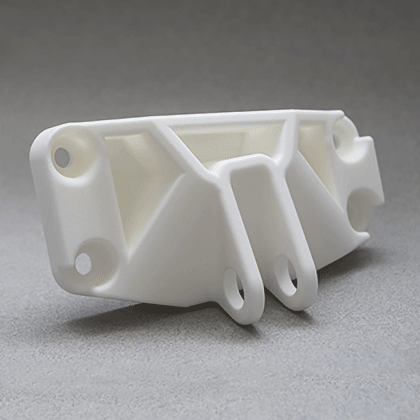Unlock the Future: Transform Your Ideas into Reality with Cutting-Edge Laser Sintering!
In the dynamic world of 3D printing, laser sintering is rapidly gaining recognition as a revolutionary technology that transforms innovative concepts into tangible products. This advanced manufacturing method involves using powerful lasers to fuse powdered materials into solid objects, allowing for the creation of intricate designs and prototypes. As industries across the globe seek more efficient and customizable production methods, the demand for laser sintering services is on the rise. From automotive to healthcare, businesses are leveraging this technology to push the boundaries of what is possible, breathing life into their ideas and enhancing their production capabilities.

Understanding Laser Sintering Technology
Laser sintering operates on the principle of additive manufacturing, where layers of powdered material are selectively melted and fused together by a laser. The process begins with a digital 3D model, which is sliced into cross-sectional layers. A thin layer of powder is then spread across the build platform, and the laser scans the surface, heating and fusing the particles where needed. After each layer is complete, the platform lowers, and another layer of powder is applied. This process continues until the object is fully formed. Materials commonly used in laser sintering include polymers, metals, and ceramics, each offering unique properties that suit various applications. The advantages of laser sintering technology are manifold; it allows for greater design complexity, reduced waste compared to traditional subtractive methods, and the ability to produce small batches of customized products efficiently.
Applications of Laser Sintering Services
The versatility of laser sintering services makes them invaluable across multiple industries. In the automotive sector, manufacturers utilize this technology for rapid prototyping of parts, enabling them to shorten the design cycle and test functionalities before mass production. Aerospace companies also benefit significantly, as laser sintering allows for the creation of lightweight yet robust components that can withstand extreme conditions. In healthcare, custom implants and prosthetics can be designed to fit individual patients' needs, significantly improving patient outcomes. Furthermore, consumer goods companies are leveraging laser sintering to create unique and personalized products, catering to the growing demand for customization. A friend of mine who runs a small jewelry business recently started using laser sintering for intricate designs, allowing her to create stunning pieces that stand out in a crowded market.
Choosing the Right Laser Sintering Service
When selecting a laser sintering service provider, there are several critical factors to consider to ensure you receive high-quality results. First and foremost, assess the provider’s experience and expertise in the field. Reviewing their portfolio can give you insights into the types of projects they have handled and the quality of their work. Turnaround time is another crucial aspect; it’s essential to find a service that can meet your deadlines without compromising quality. Additionally, customer support plays a vital role—having a reliable point of contact can make the process smoother, especially if any adjustments are needed during production. Lastly, don’t overlook client testimonials and reviews. Feedback from previous customers can provide valuable information about the provider's reliability and service quality.
The Future of Laser Sintering in 3D Printing
The future of laser sintering holds exciting possibilities as advancements in technology continue to emerge. Innovations such as enhanced laser systems and improved material formulations are expected to increase the efficiency and effectiveness of the sintering process. As research progresses, we may see the introduction of new materials that offer even greater strength, heat resistance, and flexibility, opening up new applications in fields like construction and electronics. Furthermore, integrating artificial intelligence into the design and production processes could streamline operations, making laser sintering an even more attractive option for businesses looking to innovate. The potential for customization and on-demand production will likely grow, shaping the way we think about manufacturing in the years to come.
Embracing the Benefits of Laser Sintering
In summary, laser sintering services represent a significant advancement in the realm of 3D printing, providing businesses with the ability to turn creative ideas into reality. As we explored, the technology's unique advantages and applications across various industries underscore its growing importance. However, selecting the right service provider is crucial for harnessing the full potential of this innovative manufacturing method. By considering quality, turnaround time, and customer support, you can ensure a successful partnership that brings your projects to life. Embrace the future with laser sintering, and watch your concepts transform into tangible products that can revolutionize your industry.






